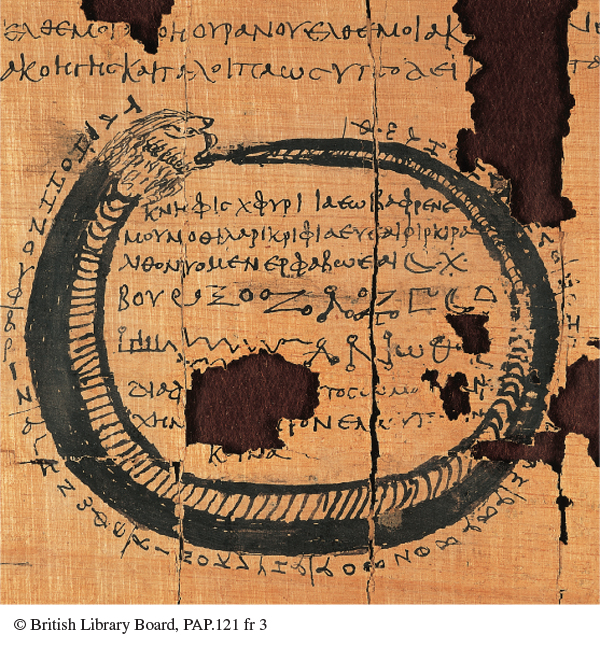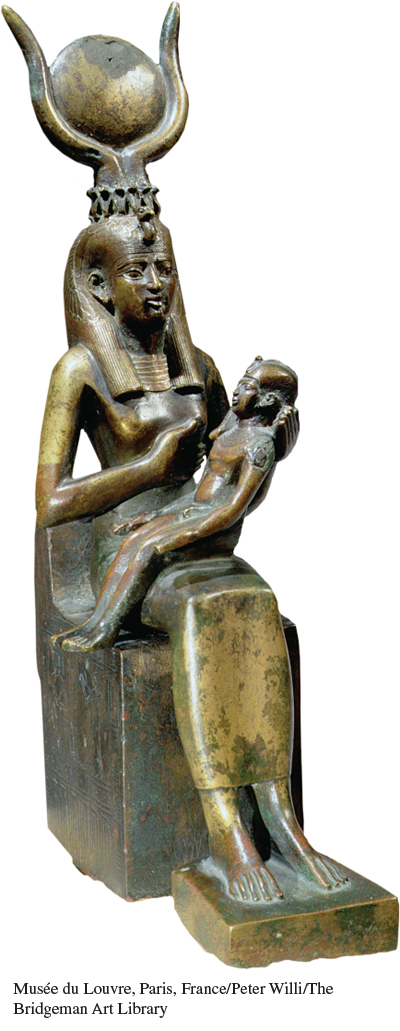A History of Western Society: Printed Page 105
A History of Western Society, Value Edition: Printed Page 101
A History of Western Society, Concise Edition: Printed Page 107
Religion and Magic
When Hellenistic kings founded cities, they also built temples, staffed by priests and supported by taxes, for the Olympian gods of Greece. The transplanted religions, like those in Greece itself, sponsored literary, musical, and athletic contests, which were staged in beautiful surroundings among impressive new Greek-
Along with the traditional Olympian gods, Greeks and non-
Tyche could be blamed for bad things that happened, but Hellenistic people did not simply give in to fate. Instead they honored Tyche with public rituals and more-

Hellenistic kings generally did not suppress indigenous religious practices. Some kings limited the power of existing priesthoods, but they also subsidized them with public money. Priests continued to carry out the rituals that they always had, perhaps now adding the name “Zeus” to that of the local deity or composing their hymns in Greek.

Some Hellenistic kings intentionally sponsored new deities that mixed Egyptian and Greek elements. When Ptolemy I Soter established the Ptolemaic dynasty in Egypt, he thought that a new god was needed who would appeal to both Greeks and Egyptians. Working together, an Egyptian priest and a Greek priest combined elements of the Egyptian god Osiris (god of the afterlife) with aspects of the Greek gods Zeus, Hades (god of the underworld), and Asclepius (god of medicine) to create a new god, Serapis. Like Osiris, Serapis came to be regarded as the judge of souls, who rewarded virtuous and righteous people with eternal life. Like Asclepius, he was also a god of healing. Ptolemy I’s successors made Serapis the protector and patron of Alexandria and built a huge temple in the god’s honor in the city. His worship spread as intentional government policy, and he was eventually adopted by Romans as well, who blended him with their own chief god, Jupiter.
Increasingly, many people were attracted to mystery religions, so called because at the center of each was an inexplicable event that brought union with a god and was not to be divulged to anyone not initiated into them. Early mystery religions in the Hellenic period, such as those of Eleusis, were linked to specific gods in particular places, which meant that people who wished to become members had to travel (see Chapter 3). But new mystery religions, like Hellenistic culture in general, were not tied to a particular place; instead they were spread throughout the Hellenistic world. People did not have to undertake long and expensive pilgrimages just to become members. In that sense the mystery religions came to the people, for temples of the new deities sprang up wherever Greeks lived.
Mystery religions incorporated aspects of both Greek and non-
Among the mystery religions the Egyptian cult of Isis spread widely. In Egyptian mythology Isis brought her husband Osiris back to life (see Chapter 1), and during the Hellenistic era this power came to be understood by her followers as extending to them as well. She promised to save any mortal who came to her, and her priests asserted that she had bestowed on humanity the gift of civilization and founded law and literature. Isis was understood to be a devoted mother as well as a devoted wife, and she became the goddess of marriage, conception, and childbirth. She became the most important goddess of the Hellenistic world, where Serapis was often regarded as her consort instead of Osiris. Devotion to Isis, and to many other mystery religions, later spread to the Romans as well as to the Greeks and non-